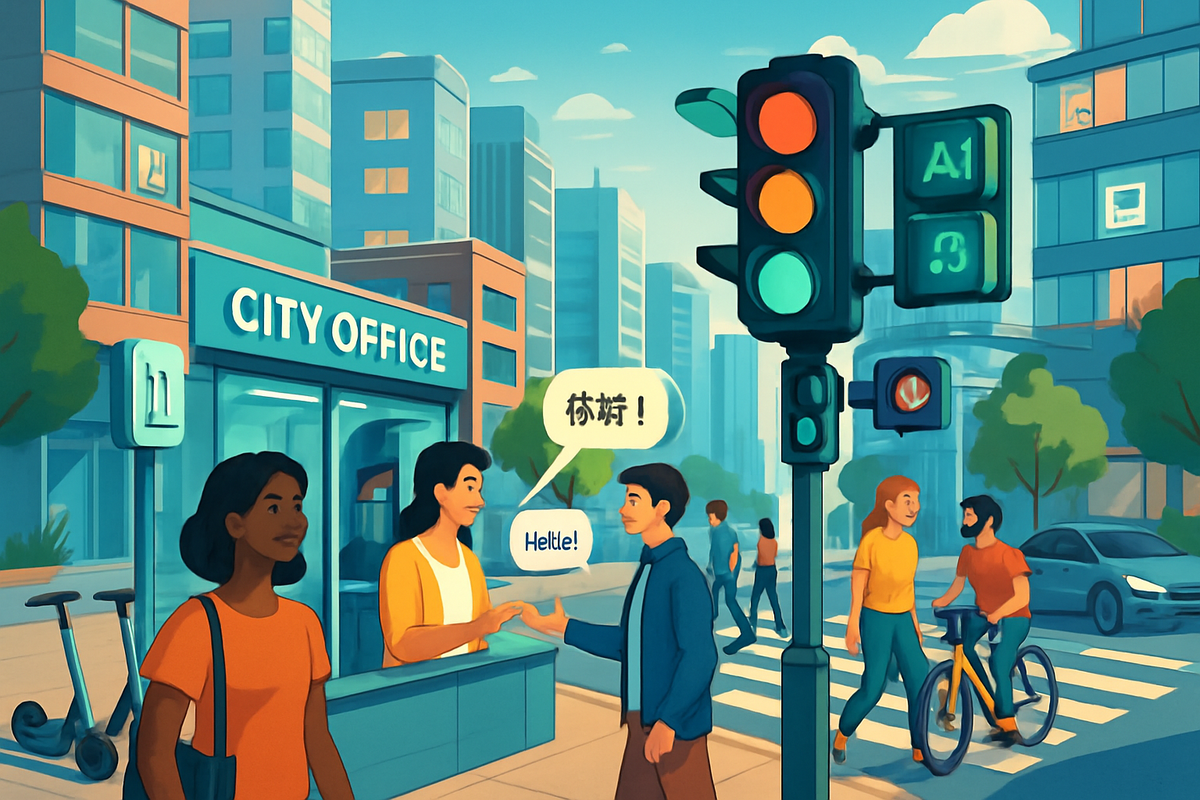How AI is Quietly Transforming Your City: 10 Surprising Day-to-Day Impacts in 2025
Discover how AI is subtly transforming city life by optimizing traffic, enhancing public safety, and revolutionizing urban routines, making each day smoother, faster, and more efficient. Could your city become a smarter, livable oasis?

Peek behind the curtain of your daily city routine, and you’ll find artificial intelligence—quietly, efficiently, sometimes mischievously—making urban life smoother, safer, and a bit more magical. In 2025, AI isn’t just about robots and flying cars (sorry, sci-fi fans)—it’s about the subtle, practical upgrades you didn’t realize you needed, but now can’t imagine living without.
1. AI Traffic Lights: Saving You Minutes... and Your Sanity
Remember waiting endlessly at a red light while not a car in sight moved in the other direction? Those days are fading. Cities like Chicago and Seoul have deployed AI-powered traffic signal systems that analyze real-time traffic flow, adjusting light cycles to minimize congestion and keep you on schedule. In fact, North Carolina recently installed 2,500 smart signals—and daily commutes are already measurably quicker and less stressful.
"I shaved ten minutes off my morning drive this week—if AI keeps this up, I might even become a morning person!"
— Jamie, Charlotte resident
2. Pollution Monitoring: Breathing Easier, Block by Block
Ever wondered why some city parks suddenly post air quality warnings? Thank AI. Networks of sensor-equipped lampposts and building-mounted monitors feed real-time data to machine learning systems, which predict pollution spikes and alert citizens. Urbanites now check their city’s air quality app as religiously as the weather—sometimes before even getting out of bed.
3. Real-Time Language Translation at City Offices
Lost in translation at City Hall? Not anymore. Many municipal offices now use AI-powered translation kiosks and apps, breaking down language barriers for immigrants, tourists, and even native-born residents (bureaucratese is a language, right?). You can renew your permit or pay taxes in your preferred language—no awkward miming required.
4. Smart Waste Collection: The End of Missed Bins
Garbage day roulette is over. AI routes trash trucks based on bin fullness sensors, optimizing collection schedules and reducing missed pickups. Some cities even send you a push notification: “Take out the trash—your bin’s nearly full!” (AI: 1, Forgetfulness: 0.)
5. Safer Streets: Predicting and Preventing Accidents
AI isn’t psychic, but it’s close. By analyzing traffic camera feeds, accident data, and even weather, city systems predict dangerous intersections and alert both drivers and pedestrians. Result? Pedestrian and cyclist deaths are declining—slowly, but surely—thanks to smarter, safer streets.
6. Personalized Public Transit Updates
No more sprinting for a bus that’s already left. Urban transit apps now use AI to send personalized alerts—"Your usual train is delayed, but there’s a bus leaving in 4 minutes from Stop C." It’s like having a transit-savvy best friend in your pocket (minus the judgment when you’re late... again).
7. Digital Twins: The City’s Virtual Doppelgänger
Behind the scenes, entire city districts are being modeled as digital twins—virtual replicas that let planners test everything from flood response to parade routes. The result: better infrastructure, fewer surprises, and more resilient neighborhoods. (Don’t worry, your digital doppelgänger isn’t getting into mischief... yet.)
8. Water, Water, Everywhere: Smarter Management
Water scarcity is a looming challenge, but AI is on the case. Cities now use predictive analytics to manage supply, detect leaks before your basement floods, and even optimize water recycling. In some metros, your shower might be powered by rainwater that’s been AI-sorted for purity. (That’s a clean win!)
9. AI in Emergency Response: Help, Faster
When you dial 911 in 2025, an AI system instantly analyzes call data, location, and even social media to prioritize dispatch. In disaster-prone cities, AI-powered drones and robots can reach danger zones before humans, sometimes saving lives by the minute.
10. Urban Green Spaces: Healthier by Design
AI-driven planning tools are helping cities design parks and greenways that reduce heat islands, filter pollution, and promote mental well-being. The result? More shade, cleaner air, and happier citizens (plus, squirrels with noticeably shinier coats).
Why Most of This Feels Invisible (And That’s the Point)
AI’s magic in the city is its quiet ubiquity—its ability to solve problems before you even notice them. The best AI upgrades are like good plumbing: you only notice them when they’re missing. But now, from the air you breathe to the bus you catch, your city is becoming a living, learning organism—and you’re a key participant in its evolution.
"The future isn’t about cities full of shiny gadgets—it’s about cities that quietly anticipate our needs, and make daily life a little less hectic, a little more human."
Takeaways: Living Smarter, One City Block at a Time
- Stay curious: That new app notification or bus arrival update? Thank the city’s AI squad.
- Get involved: Many cities now crowdsource feedback to improve AI-driven services—your voice shapes tomorrow’s tech.
- Share what you notice: Next time you spot a clever city hack, tell your friends (or tweet about it). Urban magic is best enjoyed together.
Love discovering the hidden ways tech is shaping your world?
Become a Funaix Insider!
Subscribe for Smart News & Perks
Get the latest city tech insights, stories, and urban hacks—free in your inbox.
Curious about a specific city upgrade, or want to share your own AI-powered urban tale? Comment below or join our community of tech-savvy city explorers!
© 2025 Funaix. All rights reserved.




